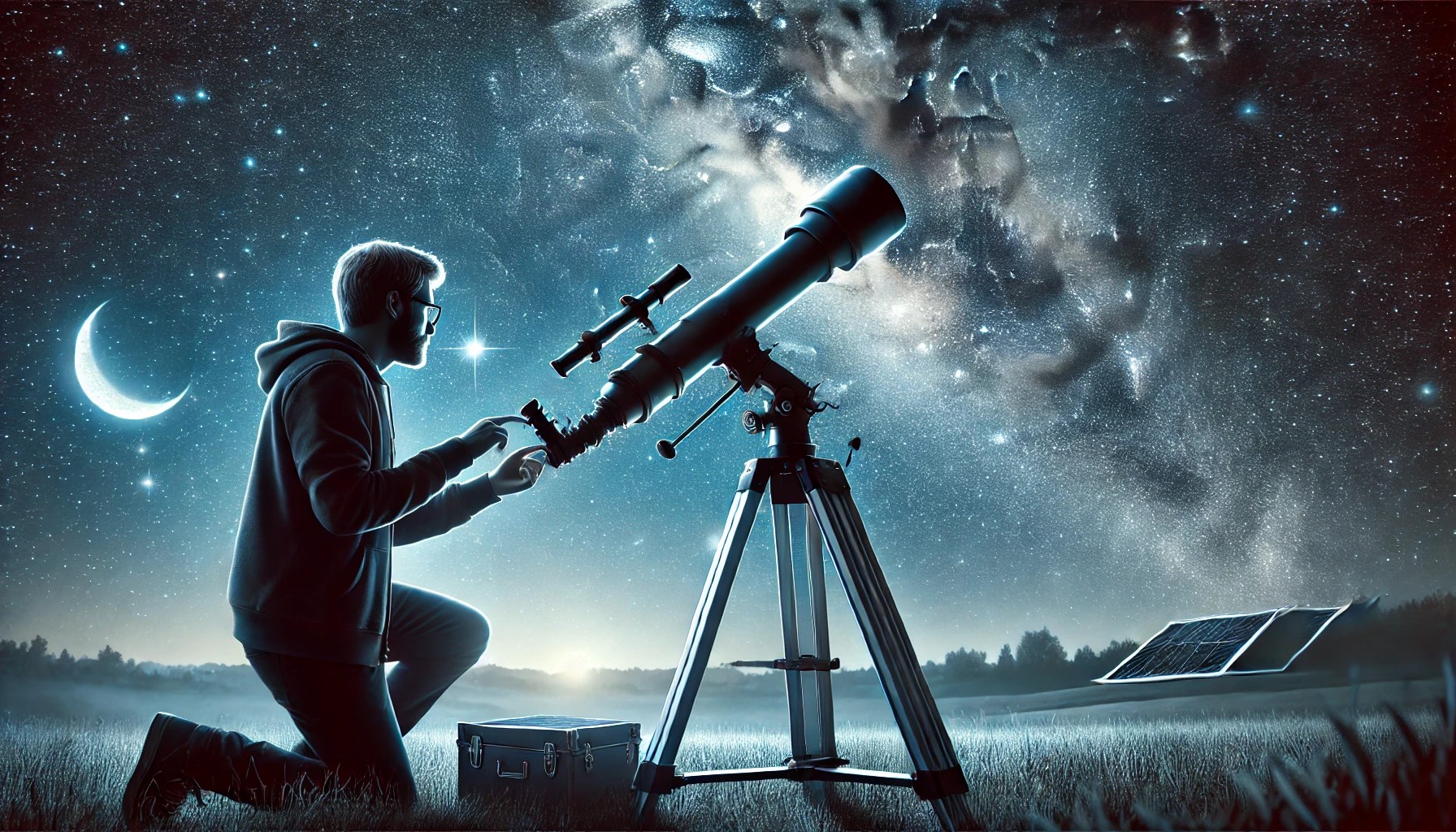A telescope performs at its best when properly aligned and collimated. Alignment ensures the optical path is straight, while collimation fine-tunes the optical elements to bring celestial objects into sharp focus. Even a slight misalignment can result in blurry images, reducing the telescope’s effectiveness. Here’s a step-by-step approach to getting it right.
Understanding Alignment and Collimation
Before making adjustments, it’s essential to distinguish between alignment and collimation:
- Alignment refers to positioning the finder scope or red dot sight so it accurately reflects the view through the main optical tube.
- Collimation involves adjusting the mirrors or lenses inside the telescope to ensure light converges correctly at the eyepiece.
Tools You’ll Need
- Collimation cap or Cheshire eyepiece
- Laser collimator (optional but useful)
- Allen wrenches or screwdrivers (depending on the telescope model)
- White sheet of paper (to help with contrast)
- Sky chart or bright star (for final adjustments)
Aligning the Finder Scope
- Choose a Distant Object – Pick a stationary target at least 500 meters away, such as a signpost or chimney.
- Center It in the Eyepiece – Using the lowest magnification eyepiece, focus the main telescope on the object.
- Adjust the Finder Scope – Without moving the telescope, use the finder scope’s adjustment screws to bring the same object into its crosshairs.
- Fine-Tune at Night – Point at a bright star and refine the alignment by ensuring the star appears in both the eyepiece and finder scope.
Collimating a Reflector Telescope
Reflector telescopes, especially Newtonians, require regular collimation due to their mirror-based design. Follow these steps for accurate adjustments:
Step 1: Check the Primary Mirror
- Use a Collimation Cap – Insert it into the focuser and observe the mirror alignment.
- Look for a Misaligned Reflection – The secondary mirror and primary mirror’s center should be concentric. If not, adjustments are needed.
Step 2: Adjust the Secondary Mirror
- Locate the Center Screws – The secondary mirror is held by a central screw and three smaller tilt-adjustment screws.
- Make Small Adjustments – Loosen or tighten the screws to align the secondary mirror so it reflects the primary mirror’s center.
- Ensure Round Reflection – The secondary mirror should appear as a perfect circle when viewed through the collimation cap.
Step 3: Align the Primary Mirror
- Find the Primary Mirror Screws – These are typically at the back of the telescope.
- Turn the Adjustment Screws Gradually – Tightening or loosening them will shift the mirror slightly. The goal is to center the reflected dot inside the collimation cap’s target ring.
- Recheck the Alignment – If using a laser collimator, the laser dot should hit the center of the primary mirror’s marking.
Collimating a Schmidt-Cassegrain Telescope (SCT)
Schmidt-Cassegrain designs require less frequent collimation but benefit from periodic checks:
- Select a Bright Star – Defocus the star while observing it through the eyepiece.
- Examine the Diffraction Rings – If concentric, collimation is set. If off-center, adjustments are needed.
- Use the Secondary Mirror Screws – Small turns on the corrector plate’s screws will center the star’s diffraction pattern.
- Repeat Under High Magnification – A high-power eyepiece will reveal finer collimation details.
Testing and Final Adjustments
- Star Test – A defocused star should show concentric diffraction rings. If distorted, slight collimation tweaks are necessary.
- High-Magnification Focus Check – Test sharpness with different eyepieces.
- Field Test – Observe planets or deep-sky objects to confirm alignment and collimation effectiveness.
How Often Should You Collimate?
- Reflectors – Check before every observing session.
- SCTs and Maksutovs – Collimate when needed, usually after transportation.
- Refractors – Rarely need collimation but benefit from occasional alignment checks.
Proper collimation ensures the telescope operates at peak performance, delivering crisp, detailed views of the night sky. Regular checks and small adjustments will keep your instrument in prime condition for stargazing.
